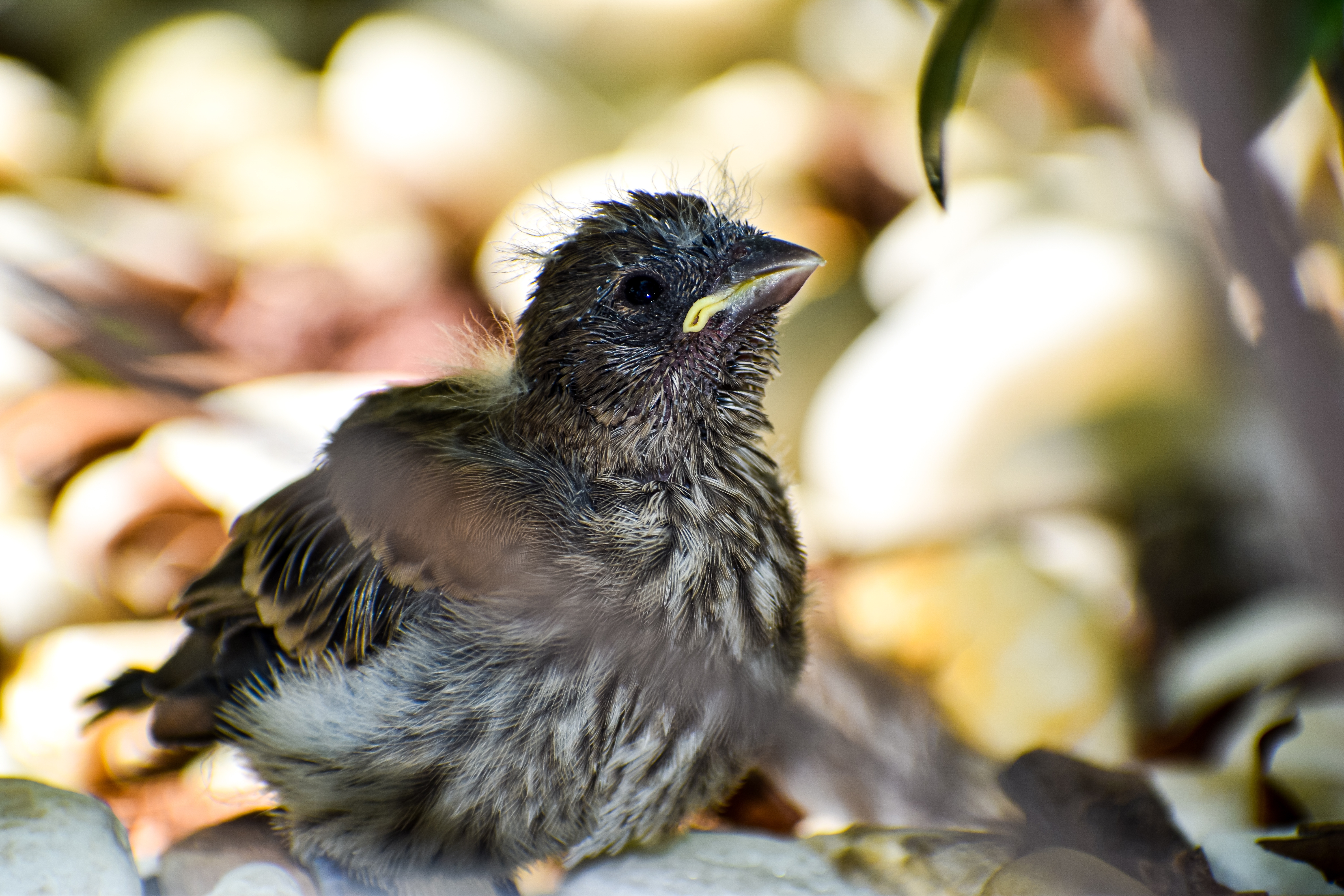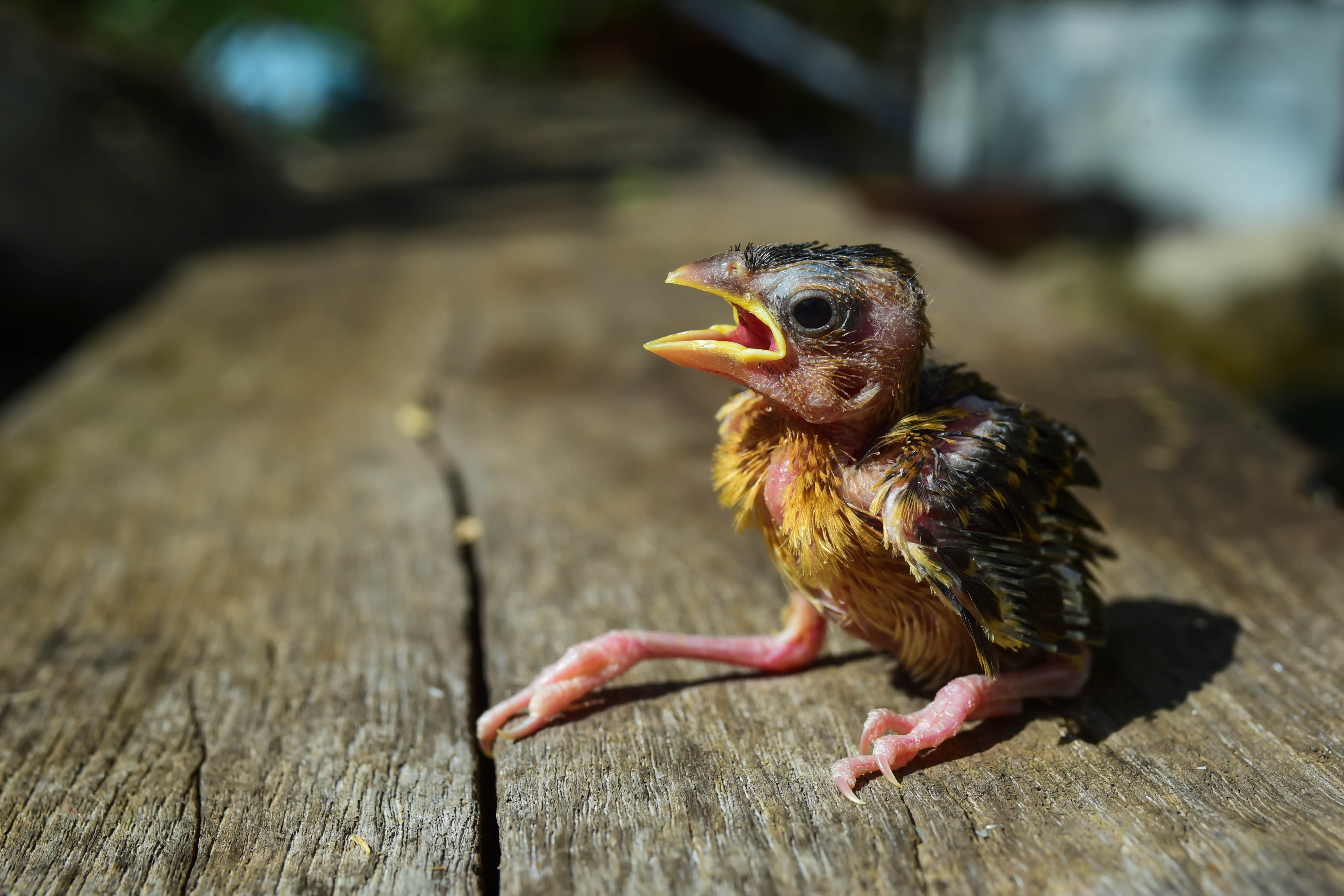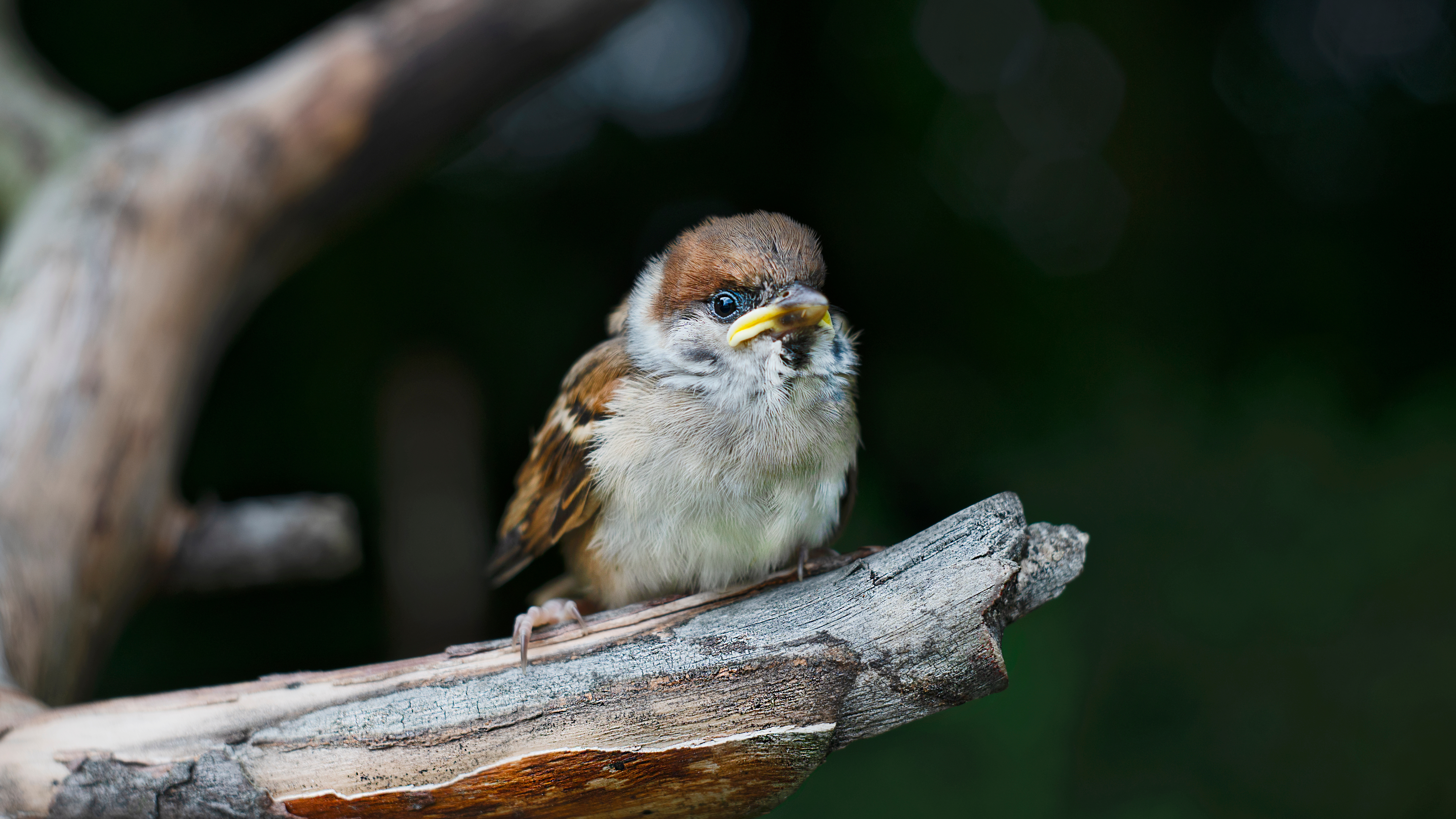|
Getting your Trinity Audio player ready...
|
If you discover a fledgling bird on ground and want to rescue it, remember this. It will seldom need saving. If you find a feathered bird out of its nest wandering around and it’s not threatened by a predator, or injured, don’t intervene.
Young birds aren’t in as much danger from the elements as one would at first imagine. Once old enough to explore on its own, young birds are strong enough to hold up against the wind, rain, and scorching heat. However, severe weather conditions and unfortunate attacks by predators often lead to a fledgling needing help.
Read on to find out everything you need to know about how to save a fledgling bird on ground.
Are you sure it is a fledgling?
When encountering a baby bird, the first thing you should do is determine whether it’s a precocial or altricial species. This will make it easier to tell the rough age and determine the nearby nesting location. Knowing the species also helps with determining the bird’s diet if you take it in.
On hatching, precocial birds sport soft down feathers and the strength to walk almost immediately. So, they are more developed than their counterparts. Common examples of precocial birds are chickens, ducks, geese, crows, hawks, owls, and parrots.
Altricial birds, like most songbirds, raptors, and several types of waterbirds, barely have any strength until they are fully developed. They are born unable to walk or fend for themselves, with their eyes closed.
It is easy to mistake a precocial nestling for an altricial fledgling. Identify the species first so you know whether or not you’re looking for a nest to rehome the little one in.
Can a fledgling survive on its own?
A fledgling has feathers and enough strength and savvy to stand a reasonable chance of surviving on its own. Its mother and father are almost always nearby up until he or she is old enough to fend for itself.
Don’t mistake a fledgling exploring its habitat while learning to fly and fend for itself, for an abandoned baby bird in need of help, no matter how clumsy it may seem. Adults kick most fledglings out of the nest at two to five days before they are capable of flying properly. But they often leave without the parents help.
So, can a fledgling survive on its own? Yes, a fledgling who cannot fly doesn’t need rescuing and will survive perfectly fine while guided, fed, and protected by its parents. A would-be first-time human rescuer will seldom be able to see this at first.
Where do fledglings sleep at night?
Fledglings sleep huddled together, separate from their parents. Adult birds and fledglings are found sleeping in any sheltered area, offering warmth, a perchable resting spot, and relative safety. Common roosting sites include dense foliage, enclaves in trees, and elevated bushes.
What should you do with a fledgling bird on ground?

If you find a fledgling bird on the ground without obvious injuries, follow these basic steps.
Clear the area of immediate danger and then retreat a safe distance away to wait and watch for the parents. If you feel a need to intervene, say, after finding the fledgling in danger, pick the bird up and place it in a nearby tree or bush. Then retreat to at least twenty feet away.
Watch from a distance for at least forty minutes to an hour. The longest parents will take to return is two to three hours. Anything past two hours alone, and it’s unlikely the parents are coming back.
What to do if you find a fledgling bird on ground.

A hatchling or nestling will typically only end up displaced from its nest due to a predator’s interference or the influence of extreme weather. If the tiny bald bird is alive and without harm, consider what type of bird it may be and where it may nest.
A hatchling, nestling, or fledgling must only be rescued if you are sure it is abandoned, or if it’s injured. If a parent does not have the strength to carry their nestling back to safety, you can put the infant back in its nest if it is healthy.
Otherwise, carefully place the baby in a safe, quiet, warm space and feed it twice every hour until it starts weaning. Alternatively, locate a wildlife rehabilitator. Those who take on the responsibility of raising a baby bird can find everything they need to know in our article “How to teach a baby bird to eat on its own”.
What to do if you find a baby bird on the ground and there is no nest

Nestlings should be returned to their nest if you can find it. The only time that you should take in a hatchling, nestling, or fledgling is if you are sure the parents have abandoned it, if it is injured or you can’t find its nest.
Because once a baby bird has left the nest of its own accord, it will never return. Putting it back will result in it jumping out again. Or the parents might kick it out later when you’re not there. So, as a general rule don’t put a fledgling back into a nest.
An even worse scenario would be placing the fledgling into the wrong nest and having it attacked by protective birds of a completely different species. This is why it’s vitally important to ensure that you recognise the type of bird first.
Rather take the baby bird home if there’s any uncertainty or if you can’t find the nest.
Temporary care for a nestling or fledgling bird found on ground
A cage will be the best home for a baby bird you find, whether it’s a nestling or a fledgling bird on ground. If you have one, pad the floor with a soft material. Cover the cage partially with a blanket or towel to give the bird shelter and security.
If you do not have a cage, prepare a moderate size box with some holes big enough for the fledgling to look through but not big enough for it to escape.
Make sure the bird can’t jump out when using a box. Give it a lid but don’t isolate the baby in complete darkness, or bonding will be difficult.
Place a nesting box within the housing area. Whether it is a cage or a box, line it with paper towels to make cleaning up droppings easy. Keep the cage or box in a quiet place sheltered from extreme heat or humidity.
Taking care of a baby bird
A nestling will most likely need a heat source, but a fledgling will do just fine with the warmth offered by its own feathers. Either place the cage or box on a heating pad or create an alternate heat source. Fill a clean sock with uncooked rice grains and microwave it for a minute or two. Ensure that it isn’t overheated by touching it to a sensitive area of skin like the inside of your arm. Then place it beside the bird once it has cooled.
A bottle filled with hot water works equally well at the right temperature. Don’t leave open water for drinking in the cage. Nestlings get all the water they need from their food. But fledglings can be fed water by hand after each feeding once they’re old enough.
Final thoughts

If you have taken a fledgling bird under your wing and are over the initial panic phase of the rescue, now is the time to focus on making it feel comfortable.
Hand-feed your new baby, introduce different food types, and then wean the bird once it is old enough.
Baby bird feed formula from a reputable pet store is the best basic source of nutrition. As it grows, offer seeds, mealworms and a selection of fresh fruit and vegetables.
It is always a good idea to contact a wildlife rehabilitator for advice or immediate assistance if you are not sure.
In most cases, an experienced rehabilitator will be able to give the baby bird a much better chance of survival if they will accept your bird. However, if you follow the directions we have given and refer to our other articles in the series, such as how to teach a baby bird to fly, you will raise a healthy, happy feathered friend who’ll be in your heart and memories forever.
Join Us
If you enjoy this Blog, we would like to offer you FOUR of James King’s books and our Newsletter as a gift.

